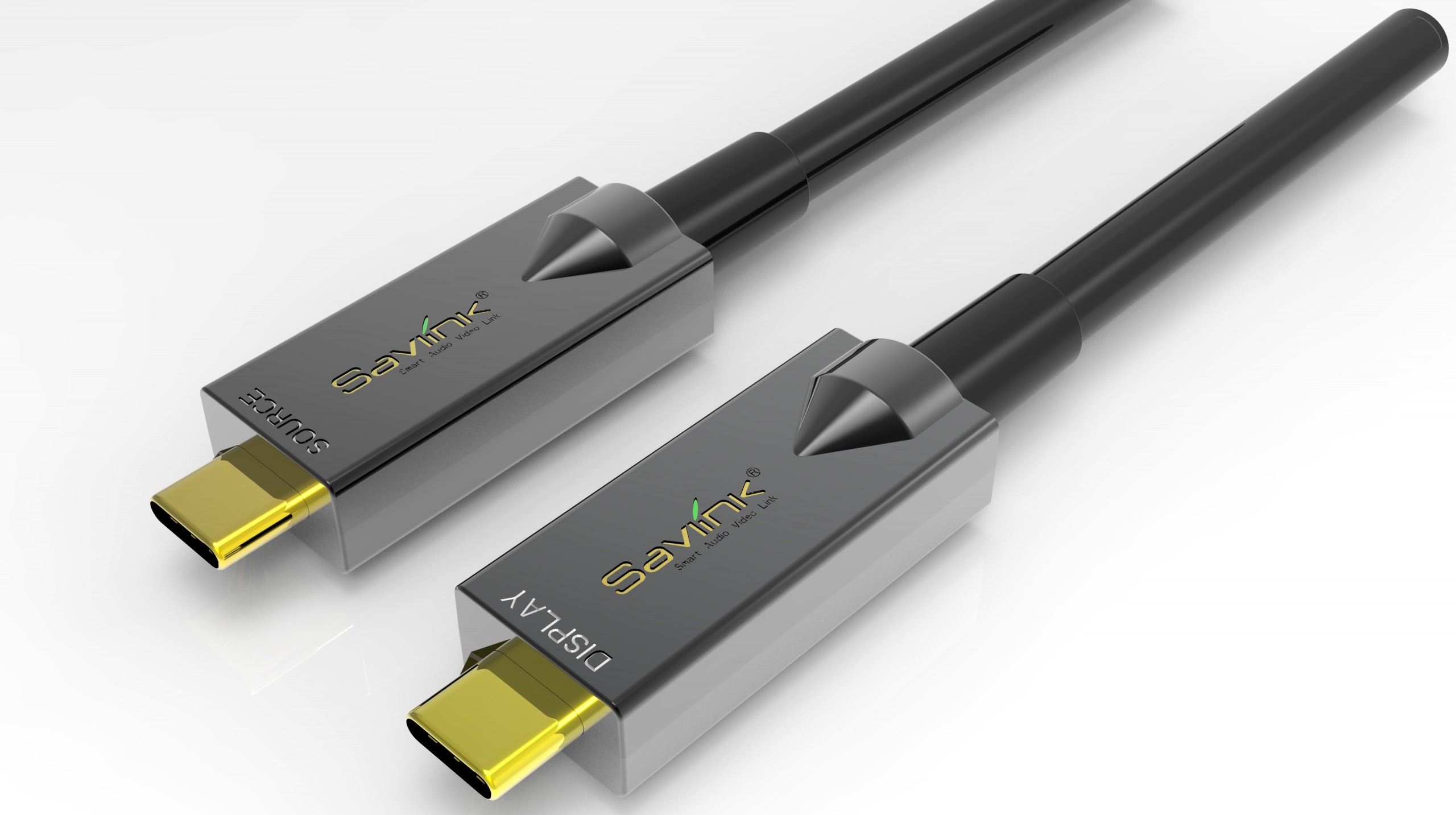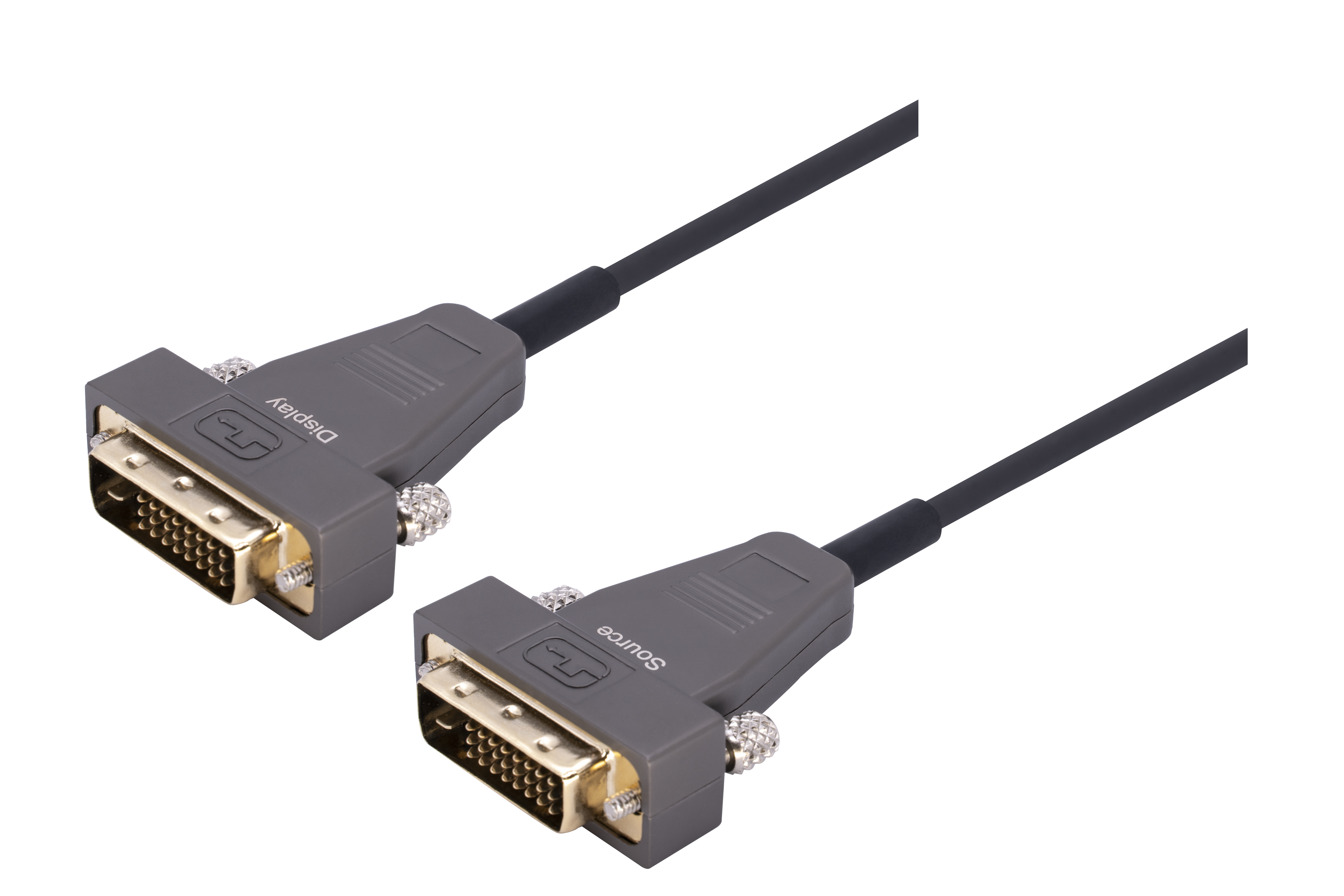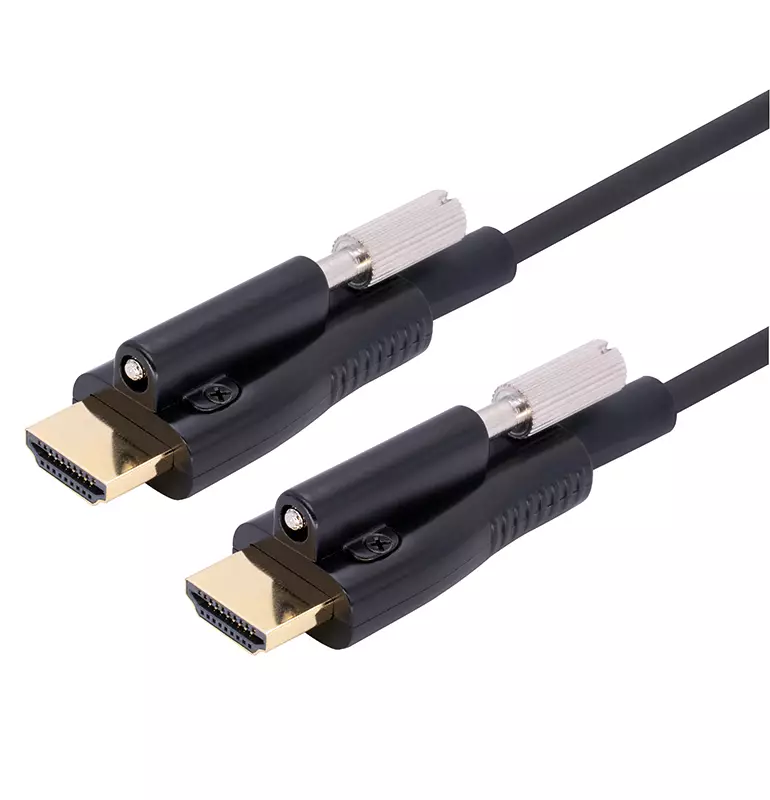A complete guide to DVI active optical cable
Nearly 150 years have passed since optical fibers were first invented, and the year 1965 marks the beginning of their modern use to transmit data. However, in recent years, significant advancements in both the fiber itself and the chips that run it have made it a practical solution for consumer use to extend standard formats such as HDMI, DVI, DisplayPort, and USB, among others. Continue reading to learn more about how Active Optical Cables function and how they can benefit you.

What are Active Optical Cables?
Active Optical Cables, also known as AOCs, convert electrical signals to light using optoelectronic modules housed in the connector heads. In contrast to passive copper cables, Active Optical Cables (AOC) involve additional signal conversions, utilizes a specialized chipset or driver with a laser to convert the electrical input into photons. After traveling through the cable, photons are converted back into electrical impulses when received at the other end, with high transmission rate, long transmission distance, low energy consumption, easy to use and many other advantages, it is the inevitable trend to enter the “all-optical network” era.
What are DVI Active Optical Cables?
DVI Active Optical Cable, which stands for Digital Visual Interface, provides a picture that is noticeably crisper and more detailed than VGA. Because it can carry both digital and analog signals, this connector is one of a kind. The DVI interface allows straightforward conversion to other display standards, such as HDMI and VGA.
Top 3 advantages of DVI Active Optical Cables:
- Analog and digital signals: While DVI can send either analog or digital signals, VGA can only send analog ones.
- Better picture quality: DVI provides users with a picture quality that is noticeably crisp and clearer than VGA. This advantage is one of the main selling points of DVI.
- Can be hot-plugged: It can be attached without shutting down and restarting the computer; however, VGA cables cannot be attached without first doing so. On the other hand, You must plug in a DVI cable before using it.
DVI Active Optical Cable Types:
Presently, two distinct varieties of DVI Active Optical cables are available to consumers.
DVI to DVI Active optical cable:
DVI to DVI Active optical cable is a hybrid cable that uses state-of-the-art technology to give unmatched picture quality, speed, and cost-effectiveness. It provides long distance transmission HD images over 100 meters. DVI AOC is much thinner, lighter and softer than conventional copper wires and provides better signal quality and perfect EMI/EMC features. DVI AOC supports up to 10.2 Gbps bandwidth single channel interface and computer resolutions 1080P and 4K2K(30P). It’s easy to use and no external power supply is required.

DVI-to-HDMI Active optical cable:
SDTH-8700 Smartavlink DVI to HDMI Active Hybrid cable is the most competitive solution in the interconnection market. DVI to HDMI cable provides single channel DVI interface and HDMI 2.0 connector and supports computer resolutions 1080P and 4K2K(30P) over 100 meters long distance transmission. have stronger resistance to electromagnetic interference and provides bandwidth support up to 10.2 Gbps. DVI-HDMI cable does not require any external USB power, it stores the monitor’s EDID information inside of the source connector.
Conclusion:
When trying to choose which DVI active optical cable is best for your laptop, desktop computer or external display device, it can be difficult to make a judgment call on the variations in the options available. SmartAVLink is a reliable choice for choosing DVI active optical cables, and quality products and first-class service are the keys to our success, if you are interested in our DVI active optical cables, please feel free to contact us for more information.

